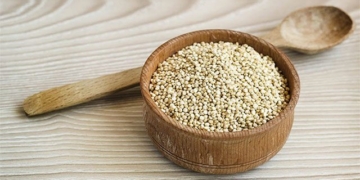After Tet, many families want to find ways to replant their peach trees or techniques for growing peach flowers in pots. Peach flowers are an essential element in Northern families during Tet celebrations.
How to Replant Peach Trees After Tet
- Why is it necessary to care for and revive peach trees after Tet?
- Replanting Peach Trees After Tet
- Collecting Peach Trees
- Preparing the Planting Soil
- Pruning Branches
- Fertilizing Peach Trees
- Controlling Tree Growth
- Leaf Shedding
- Stimulating and Controlling Flowering Time
- Pest Control
- Shaping and Styling Peach Flower Pots
- How to Care for Peach Trees to Bloom on Next Tet?
Peach trees are primarily used for decoration during Tet; however, to save costs for the following year, many families choose to replant their old peach trees to continue enjoying them during the next Tet holiday. The technique or way to replant peaches after Tet is not too difficult, but it requires meticulous care. Let’s learn how to care for peach flower pots after Tet so that next year we can have beautiful peach trees for the celebrations!
As the spring days gradually pass with the bustling atmosphere of daily life, you might be wondering how to care for your peach flower pot to ensure a beautiful bloom next year.
Why is it Necessary to Care for and Revive Peach Trees After Tet?
Peach trees displayed during Tet are when the trees produce many buds and flowers. The flowers need to be maintained for a certain period, requiring a lot of nutrients during this phase.
If we do not care for and take recovery steps for the trees after Tet, the peach tree may deplete its nutrients, fail to sprout, become weakened, and lead to poor blooms the following year. In some cases, the peach tree could even die.
Replanting Peach Trees After Tet

Before replanting the peach tree, you can use growth-promoting products to help the tree develop its roots.
Peach trees after Tet will usually have exhausted their young buds and remaining flowers. The nutrients in the pot may not be abundant, but they are still sufficient to sustain the tree. Just ensure to water it adequately to keep the pot moist.
Collecting Peach Trees
After Tet, you should replant the tree immediately to ensure it remains fresh and does not wilt. The process of collecting peach tree roots typically begins around the 10th day of the Lunar New Year and lasts for more than 20 days. However, to “choose” the most beautiful roots, some start collecting as early as the 6th or 7th day. Most peach growers note that to graft, bud, and cultivate a peach tree with a root size of a wrist or larger takes 2 to 3 years, or even up to 5 or 6 years.
Collecting peach roots after Tet not only saves money on seedlings but also avoids losing space for cultivating new plants. Each year, it provides large peach trees for sale. For this reason, peach nurseries take advantage of this to create more beautiful shapes.
Usually, after bringing the peach roots back to the garden, the first step is to “revitalize” the trees. Each peach root will be “resuscitated” by being placed in the shade, pruning excess branches and leaves, watering, and only after a few days can it be planted. It takes a couple of weeks for the tree to recover before moving on to regular care, pruning, and controlling growth. All collected peach and kumquat trees must have their canopies reinforced or shaped for a more aesthetically pleasing form. The care and pruning process does not require much effort since the trees already have established shapes. After a year of care, there will be a beautiful peach tree ready for the next Tet and potentially sold at a high price during the next holiday season.
Preparing the Planting Soil
Peach trees do not tolerate waterlogging, so it is important to choose well-drained, high ground soil, making the soil loose and creating beds about 25-30cm high and 70cm wide, with trenches for good drainage.
If you want to replant a new tree from an old root, you should apply the replanting techniques shared by nurseries: choose varieties where the trees are still young, as these will survive longer, grow well, and produce consistently beautiful and vibrant blooms. Additionally, you must improve and find a type of loamy soil mixed with clay with a pH level between 7 and 8, which is ideal for planting.
The best planting location is outside in the garden, where it is dry and receives plenty of sunlight. If space is limited, you can plant in pots, but ensure that drainage is handled well to avoid waterlogging that could kill the tree.
Before planting the peach tree, you can also use growth-promoting products to help the peach tree develop roots, such as root enhancers, Sin Thai garden products, and Orgamin mixed with clean water according to the instructions on the packaging. Water the pot about 10-15 days before planting the peach tree. These products can help your peach tree grow and encourage new root development, increasing its chances of survival when replanted.
When transferring the peach tree to the planting soil, you can also keep it in its old pot but should replace the soil mixture with a ratio of 3-4 parts soil to 1 part organic fertilizer.
Pruning Branches
To ensure that the peach tree produces many beautiful buds in time for the next Tet, you need to prune it by removing old branches. Make sure to cut deeply so that new branches sprout more vigorously, resulting in more buds the following year. Subsequent pruning should be lighter, occurring once a month until the sixth month of the lunar calendar, when you should stop. The pruning process must be decisive to avoid crushing or damaging the tree, which could affect its growth rate, health, and aesthetics.
Fertilizing Peach Trees
You can apply about 3-5kg of organic fertilizer per tree, depending on the size of the peach flower pot. It is advisable to fertilize the peach tree from 20 days after planting until September every year. Apply 0.5 to 1kg of NPK fertilizer mixed with 2ml of NEB fertilizer per tree, depending on its size, applying it 30-50cm away from the base according to the canopy’s projection. Ensure adequate watering during fertilization so the tree can absorb the nutrients well and grow effectively.

You can apply about 3-5kg of organic fertilizer per tree, depending on the size of the peach flower pot.
Controlling Tree Growth
Controlling tree growth is meant to limit growth and prompt the tree to enter the flowering phase.
Use a sharp knife to make a circular incision through the bark down to the wood near the tree collar. After about a week, the peach leaves should change from dark green to light green and droop slightly. If the leaves have not changed, you need to make another incision above the old cut. If it still hasn’t changed, you may need to make a third incision.
The growth control period starts from mid to late August in the lunar calendar, starting with healthy trees that have all green leaves. Control should be done last on weaker trees that have some yellowing leaves. Do not control older trees.
Leaf Shedding
Peach trees are deciduous in winter. After the leaves fall, the flower buds develop and grow quickly. If left to nature, the peach trees will drop their leaves by the end of December, and flowers will bloom by the end of January or February the following year. To have beautiful flowers for Tet, along with controlling the tree as mentioned, we must also shed leaves ahead of time. The timing for this varies depending on the variety and the strength or age of the tree. Typically, leaves of the peach variety “Dao Bich” are shed from the 5th to the 20th of the 11th lunar month, while “Dao Bach” sheds from the 1st to the 15th of the 10th lunar month. Older and weaker trees will shed leaves later than strong ones.

Typically, leaves of the peach variety “Dao Bich” are shed from the 5th to the 20th of the 11th lunar month, while “Dao Bach” sheds from the 1st to the 15th of the 10th lunar month.
Care must be taken to protect the flower buds at the leaf axils. It is advisable to pull off each leaf individually rather than pulling them straight down from the tip, as this could damage the flower bud.
Stimulating and Controlling Flowering Time
Even after implementing the above care and control measures, the timing of blooming can sometimes not coincide with Tet. If cold weather occurs, the flowers will bloom later. Conversely, if warm weather happens, the flowers may bloom earlier. Therefore, stimulating and controlling may be necessary in specific circumstances.
- Forcing: At the beginning of the 12th lunar month, if flower buds are not clearly visible, indicating slow blooming, it is necessary to force them by watering with ammonium sulfate or urea. Loosen the soil around the base to a depth of 5 cm, and apply fertilizer. Water with hot water at 35 to 40 degrees Celsius.
- Restraining: In the last week of the 11th lunar month, if flower buds appear large, indicating early blooming, you should implement restraining measures by shading the plants, creating darkness for them throughout the day for ten to fifteen days. Shade while monitoring the weather and continue to study the plants.
Do not water or disturb the soil. Use a knife to make a ring cut around the trunk as mentioned above. Loosen the soil, trim some roots, and use a hoe to cut off 10-20% of the roots, ensuring that the cuts are evenly distributed around the base, similar to how one would prepare for harvesting during Tet. Forcing and restraining should only be done when absolutely necessary, as both can affect the quality of the flowers.
Pest and Disease Control
If peach trees are affected by red spider mites causing yellowing and leaf drop, you can alternate treatments with Regent 800WG, Sokupi, etc. If your peach pot shows signs of root rot or leaf spots, Anvil 10EC or Penac P should be used. Peach trees can also be harmed by mealybugs; you can use Supracide for prevention.
Shaping and Structuring Peach Flower Pots
Shaping and structuring should be done continuously every 5-7 days by bending and tying young branches together or creating frameworks according to predetermined shapes, trimming and removing unwanted branches. You can also combine this with bark carving on the peach trunk to give your peach tree a more ancient appearance.
How to Care for Peach Trees to Ensure Flowers Bloom in Time for Tet?
According to peach growers, to ensure that peach trees bloom in time for Tet, you must follow these care methods: regularly monitor the weather for pruning the branches; if the weather is warm, care can be delayed, while if it is cold, care should be done earlier.
Peach trees are planted from late January to early February of the lunar calendar, and by April and May, you should prune the lower branches to nourish the upper ones. In July and August, continue to trim excessively high branches to maintain an even canopy.
Starting from the end of November, remove all leaves to encourage flowering and new growth. If it gets cold during this time, traditional wisdom suggests ring barking the peach tree in the 8th lunar month by making a cut around the trunk below the branch junction, at least 40 cm above the ground, to reduce disease from rain.
After a week, if the peach leaves do not turn light yellow or droop, you may need to ring bark the tree again until the leaves change color. After completing the ring barking, you can cover the wound with a plastic bag to prevent rainwater from collecting and causing rot, and use warm water to encourage quicker budding.
To limit stem and leaf growth and stimulate flower buds, at the beginning of the 11th lunar month, use a knife to make several ring cuts around the peach branches and trunk. By mid-November, manually remove all leaves from the tree; this is an ancient practice followed by flower growers to ensure that the peach tree will produce new buds and flowers as Tet approaches.




















































